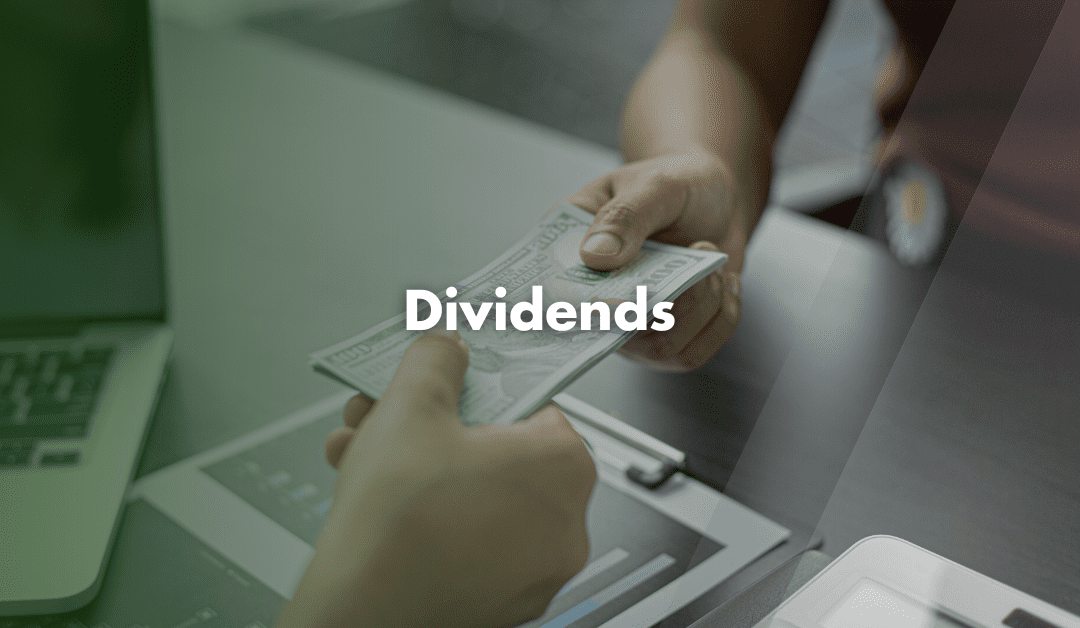Dividends are payments that limited companies distribute to their shareholders from their profits. If a company makes a profit after covering all expenses and taxes, it can choose to share some of that profit with its shareholders. These payments provide shareholders with a return on their investment in the company.
Unlike salaries, dividends are not a business expense and do not reduce the company’s Corporation Tax liability.
How Do Dividends Work?
A company can only pay dividends if it has enough profit left after paying its tax bill and other obligations. The company cannot issue payment if there is no profit. Directors must then officially declare and record them properly to comply with HMRC.
When a company issues dividends, shareholders receive a dividend voucher. This document includes:
- The date of the payment
- The company’s name
- The names of shareholders receiving the dividend
- the amount paid to each shareholder
The distribution of dividend amount is usually according to the percentage of shares each shareholder owns. For example: If a shareholder owns 50% of the shares in a company, they should receive 50% of the dividends declared.
Tax Efficiency and Flexibility
For company directors, they can provide a tax-efficient way to make money from their business. Instead of taking a high salary, many directors choose to take a combination of a low salary and dividends. This approach also reduces payable National Insurance Contributions. Additionally, dividends can be declared as and when the company has sufficient profits, unlike a salary which must be paid regularly.
How Does HMRC Tax Dividends?
While companies do not pay tax on dividends, shareholders may have to pay tax based on their total income. Tax rates for dividends are lower than regular Income Tax rates.
The tax-free dividend allowance for the 2024/25 tax year is £500. Once you use up this allowance, dividend tax applies based on your income level:
- Basic Rate taxpayers pay 8.75%
- Higher Rate taxpayers pay 33.75%
- Additional Rate taxpayers pay 39.35%
For example: If a director receives a salary of £9,100 and £50,000 in dividends, they will pay tax only on the portion exceeding their Personal Allowance and dividend allowance.
Declaring and Paying Dividends
Only limited companies can pay dividends because they are separate legal entities from their owners. Sole traders and partnerships do not have the same structure, so they cannot issue them.
To issue dividends legally, a company must hold a directors’ meeting to declare them. Even if there is only 1 director, they must document the decision. Each payment must have a corresponding dividend voucher for records.
Additionally, companies can issue interim or final dividends:
- Interim Dividend – Issued throughout the year and declarable at any time
- Final Dividend – Typically decided at the company’s Annual General Meeting (AGM) and issued at the end of the financial year
How Much Can a Company Pay?
There is no strict limit on the amount a company can pay in dividends, as long as the company has enough profit to cover the payments. Excessive dividend payments can leave a company short of funds for essential expenses or unexpected costs.
Dividends come in 2 main forms:
- Cash Dividend – Shareholders receive payments directly into their bank accounts
- Stock Dividend – Instead of cash, shareholders receive extra shares in the company
Stock dividends can be useful when a company wants to reward its shareholders while retaining cash for investment. However, this may dilute existing shareholding percentages if the company issues new shares.
The frequency of dividend payments depends on the company’s performance and policies. Some companies pay dividends annually, while others distribute them quarterly. Furthermore, some businesses may have irregular dividend schedules based on profitability.
Dividend Yield
The Dividend Yield is a metric which shows how much a company pays out in dividends relative to its share price. For example: If a company’s share price is £20 and it pays a £2 dividend, the dividend yield is 10%. A higher dividend yield can indicate a stronger return on investment.
Reporting Dividend Income to HMRC
If your total dividends exceed your Personal Allowance and the dividend allowance, you must report them to HMRC. How you report them depends on the amount:
- If dividend income is below £10,000 – You can update your tax code or inform HMRC directly
- If dividend income is above £10,000 – You must submit a Self Assessment tax return
Contact Us
We are not just accountants; we are Chartered Accountants with one of the most reputable and premium accounting bodies. We are registered and regulated by ACCA; so you can rest assured that you are in good hands. Knowing this, don’t hesitate to get in touch with us if you require assistance: Pi Accountancy | Contact Us

